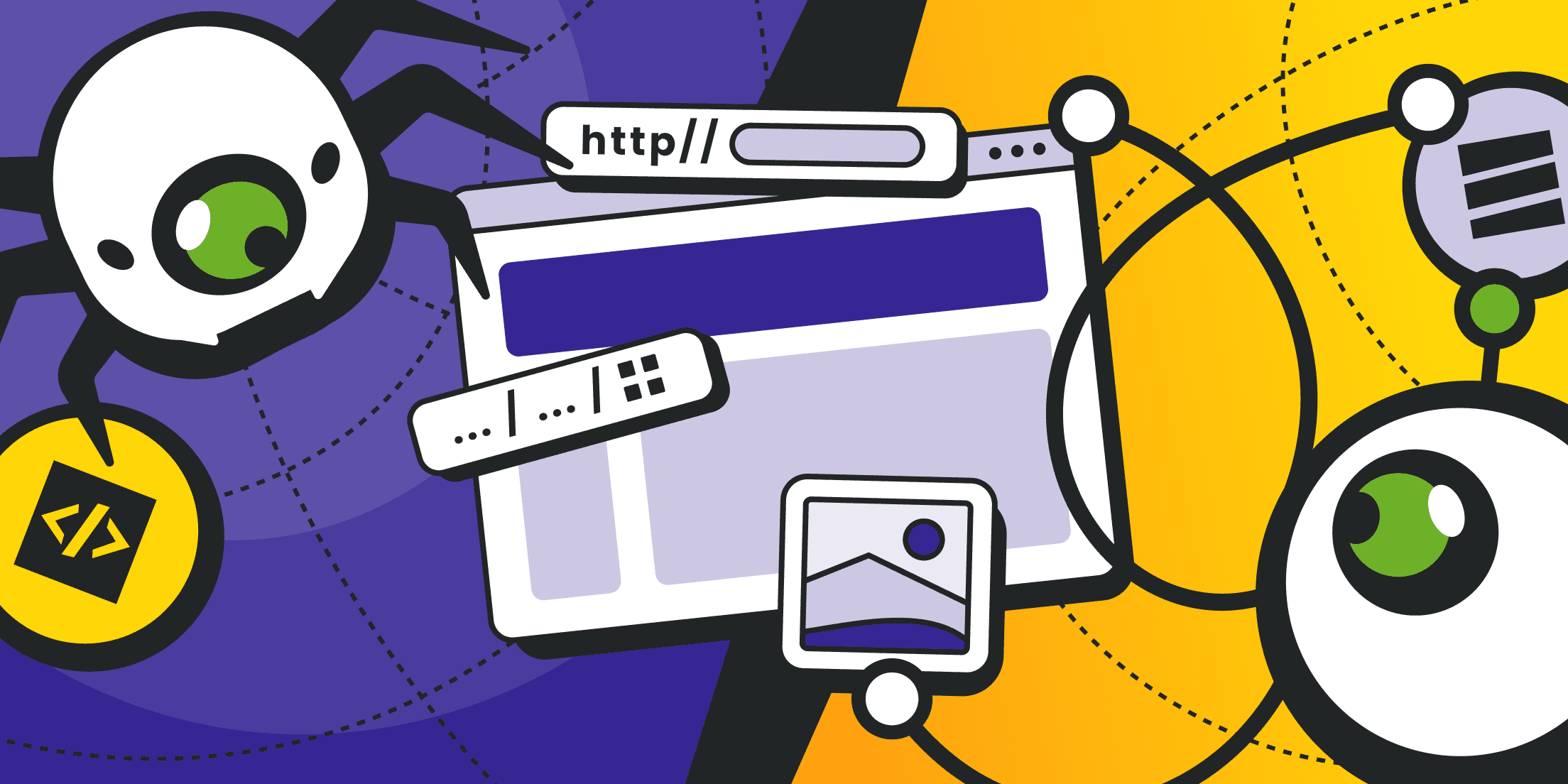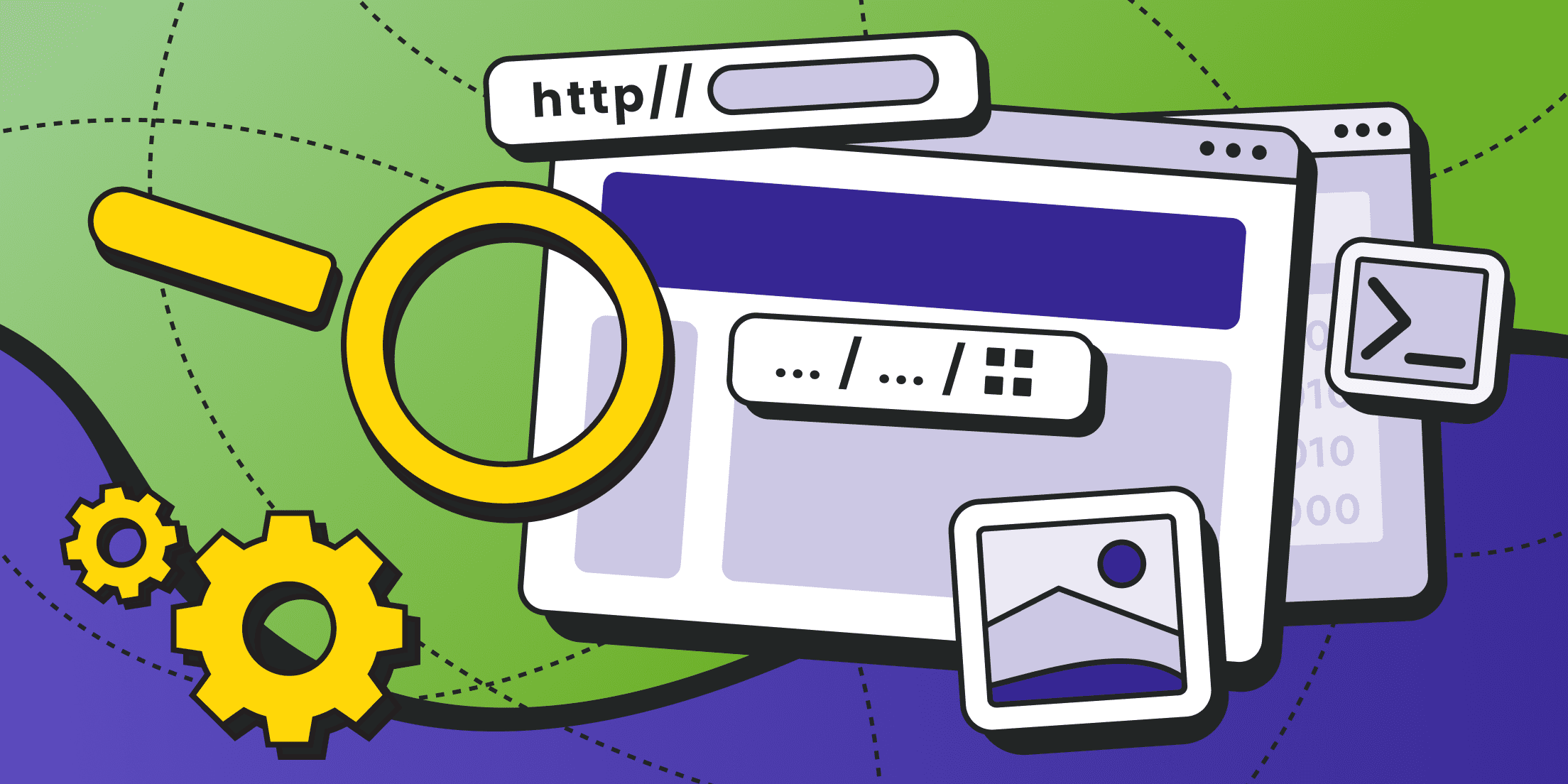In this article, we are going to delve into the distinction between two data analysis concepts available on various sources on the web (websites). We will also discuss the purposes, methods, advantages and disadvantages of each approach
What Is Data Scraping (Parsing)?
Data is not always provided in an easy-to-process process. A complex and unreadable website address on a manager's business card is just one simple example. To let a client access this information (convert it from a visual representation to a textual input within a browser's address bar), letters, numbers and other characters have to be manually typed on a keyboard.
However, the format can be changed by adding a QR code to the business card or using an NFC tag. In that case, the required information can be easily read using specialized software. This will prevent a user from making a mistake, while the entire input process will be significantly faster.
A similar situation arises when the required data stored on a computer's hard drive essentially comes in an "unreadable" format, thus being incompatible with software programs. Each program is initially developed to read only those formats that are implied by its developers. If the existing formats are not supported, the program will be unable to read the file.
Here's another example: imagine that you need to gather a database of email addresses, but they are stored within PDF files, images (business card photos), email clients, business documents etc. How can you gather the required information in one place to further convert it into a more convenient (readable) format?
A parsing program (scraper) will help. It can open various types of files, find the required info there and then save the data in a different format (typically in the form of charts or lists, but other formats like XML markup, etc. are also possible).
The process of searching for information and converting it into a new type/format is called parsing or scraping.
Previously, we explained what data parsing is. To be precise, web scraping is the process of searching and converting the data into a more convenient format suitable for analysis, storage, indexing etc.
What Is Web Scraping?

As the prefix "web" suggests, web scraping is the process of searching and converting web data into a convenient format. This refers to information found on web pages and services on the Internet.
It's important to note that modern information systems can work with different data formats. However, information is not stored on the World Wide Web only. Therefore, there are also offline parsers (scraping programs) designed to work with users' local files.
Web scrapers have gained the utmost popularity. Why?
- You can use them to quickly check bulk websites for errors, content quality, structural compliance, availability of mandatory tags and labels etc.
- Web parsers can emulate user behavior, making it possible to evaluate the performance, security level, load and other characteristics of a website/web service using software tools.
- Scrapers enable rapid discovery of relevant information on particular topics on the web or on certain websites.
- They can be used to structure and accumulate various data about competitor websites. For example, you can monitor price dynamics, product range, new promotions etc. This makes them powerful marketing and research tools.
- Scrapers can detect new content and notify about various events like negative reviews, new comments, special offers, mentions etc.
- Using specialized software modules, scrapers can convert one data format to another. For example, they can scan images to extract textual information (optical character recognition function) etc.
Web scrapers can function as standalone software on user devices (PC or virtual/dedicated server) or be deployed in the cloud as a service (SaaS or PaaS format). In some cases, scrapers can come as a part of more complex software systems as one of their components.
The tasks and objectives of web scrapers can notably vary, ranging from positive goals focused on creation and improvement to negative goals like industrial espionage, detection of security vulnerability etc.
The most popular business tasks include:
- Competitor analysis (marketing research);
- Price and assortment monitoring;
- News and thematic content search;
- Finding and extracting contact information;
- SEO tasks (search engine optimization);
- SERM tasks (online reputation management).
While the benefits of parsers/scrapers are more or less obvious (they assist in solving practical tasks), the downsides are rarely discussed. Let's fix that now.
Demerits of Using Web Scrapers
- Parsers always create a parasitic load on the target website. That's why large portals frequently use their own protection systems like CAPTCHA display, blacklisting IP addresses, customer scoring etc.
- Scraping programs require a constant network connection (with a wide internet channel). To quickly gather a large information volume, it is necessary to parallelize flows. It will be quite difficult to implement this step without rotating proxies (otherwise, the device's IP address will be quickly blacklisted and blocked).
- The software has to be purchased (free versions are also available, but they frequently come with technical limitations, thus being suitable either for testing or for small-scale scraping);
- If you rent a ready-made cloud service, you need to pay for subscription;
- Data has to be stored somewhere. It's one thing when you collect a small amount of information about competitors, but it's quite a different story when you have to deal with millions of pages and images. This goes far beyond megabytes - this concerns gigabytes or terabytes of data on a disk.
- A specific scraper is frequently tailored to a particular task, such as a sneaker bot, for example (what a sneaker bot is). This means that it can be challenging to adapt it to your needs .
- If the scraper is universal, it can be difficult to configure without experience and specialized knowledge. To direct the scraper to the required data, you will need to fine-tune the steps and tags.
- Mind that it's possible to violate specific legal requirements while parsing. This is because data collection is treated differently in various countries. Thus, you need to find that out in advance.
Let's talk about the benefits as well.
Advantages of Using Web Scrapers
- Solving many applied tasks related to converting one set of data into another;
- Accelerated search and structuring of necessary information. Obtaining data for analysis and monitoring purposes;
- Automation of various marketing tasks;
- Increased accuracy and reduced recognition time by eliminating a human factor;
- Budget economy by obtaining real-time data and process automation;
- If a niche service is rented, then market data can be provided in a ready-to-use format. Additionally, a large cloud storage may be offered, relieving concerns about disk space and data preservation.
- Simultaneous processing of a large number of information flows and possibility to work with large databases.
What is Crawling a Website?

A web crawler is a specialized script that navigates websites in search of new content and changes. Webmasters call this process “indexing”. However, from a purely technical standpoint, the data crawling (indexing) process does not significantly differ from parsing or scraping.
The scanning mechanism works as follows:
- A specialized utility (bot or spider) opens the web page contents;
- The data (including the entire HTML structure and code) is "pulled" to the search engine server, where it is analyzed and compared with the previous relevant version;
- Content relevance and value are instantly checked, evaluating a number of factors like navigation convenience, page load speed and other multiple parameters;
- If necessary, edits are made to the knowledge graph, new pages are added to search results, while outdated ones are removed.
Similar operations are completed during simple scraping. Data from web pages is also collected by a specialized script, but it is further stored on servers or users' computers instead of a search engine system.
Summing it all up, web crawling is the process of analyzing the content of each individual page of a website for further ranking in relevant search results. The goal of a search bot is to "understand" and "see" the web page content, just as ordinary users would do.
Unlike potentially parasitic traffic brought by the scraping process, crawling is a highly desired process for a website. Based on the results of crawling, a website can be added to search results or improve its ranking if it has already been there.
Special configuration files and maps are created for search crawlers, where webmasters (website owners) can indicate what should/shouldn’t be crawled, what materials have been added/removed etc. This is done using special directives in robots.txt files, XML sitemaps and specific HTML tags within pages.
Web Scraping vs Web Crawling - The Major Differences

As understood from the description, scraping is completed by users or business owners for their own purposes, such as content search, analysis, extraction or conversion into a convenient format.
The goals of parsing (scraping) are purely commercial. Special software and solutions (like rotating proxies) are used to bypass blocks and parallelize processes.
The goal of web scanning is adding a website to the search results and its further indexing. This is necessary for website owners, so search engine spiders (search bots) are not blocked. On the contrary, they are expected and information about websites/pages for scanning is prepared in advance
While scraping, the data is collected and processed according to search criteria. For example, only contact info or the body of comments may be extracted or mentions of companies, brands are found. Information can be exported and saved in any place convenient for a client to be further used for processing and analysis. All tabular export formats are generally supported.
While scanning, the information is processed by search engines only. It is not exported anywhere. Third-party individuals do not have access to such data.
When it comes to technical nuances, the differences are not obvious. Any parser can present itself as a search bot or a web browser, acting on its behalf. Data from webpages is collected in the same format - the HTML code.
The differences are all about the purposes of processing such data and the technical capabilities for clients.
Search bots do not require proxies or other protection mechanisms against blocking. If a website does not want to be indexed, it is their problem. The crawler will simply move on to another web resource in the scanning queue.
As opposed to crawlers, parsers (scrapers) have to collect information from a website regardless of the available obstacles. That is why special modules to bypass protection, connect proxy lists, detect captcha, emulate real user behavior etc. may be used in the software.
Summary and Conclusion

The term "web scanning" (crawling) is associated with indexing of web page content. It is necessary for web resources (and website owners) to have their data included in organic search results.
The parsing procedure is solely related to commercial purposes and tasks like monitoring, analytics, search, extraction etc.
Technically, however, the procedures of scanning and parsing are largely similar. In both cases, HTML code from web pages is collected and analyzed.
If you are specifically interested in data parsing (scraping), you won’t go without additional investments. Even if you use specialized software, you will need to connect a proxy list to prevent the targeted websites from blocking the IP address of the device sending requests.
Read also: How to Generate a Random IP Address for Every One of Your Sessions
Residential or mobile proxies are the best solutions to bypass blocks.
You can buy mobile and residential proxy packages from us. Froxy offers over 8 million rotating IPs, a convenient control panel and up to 1000 concurrent ports. The address selection accuracy is up to the required city and network operator. You pay for the traffic only.




